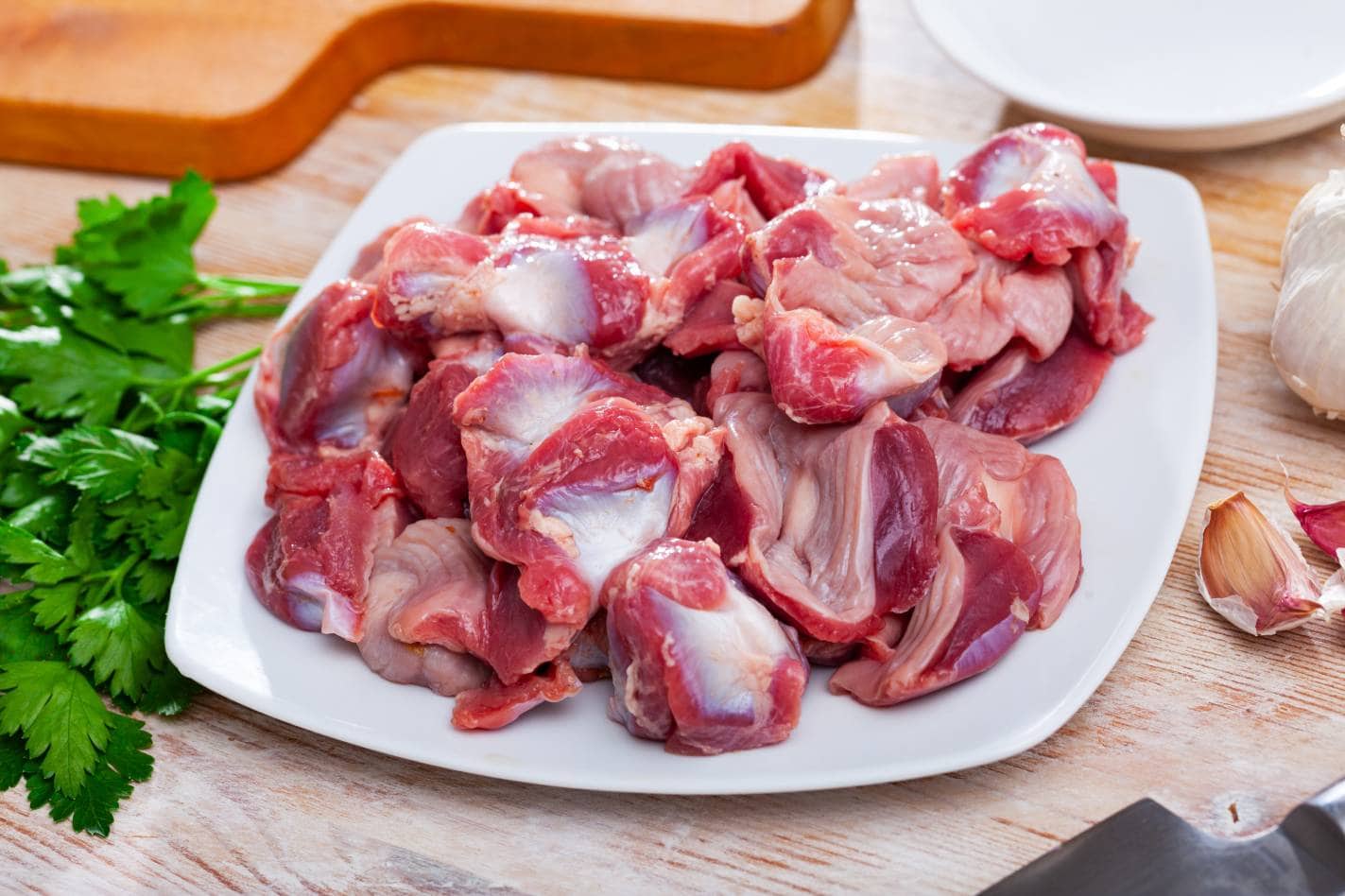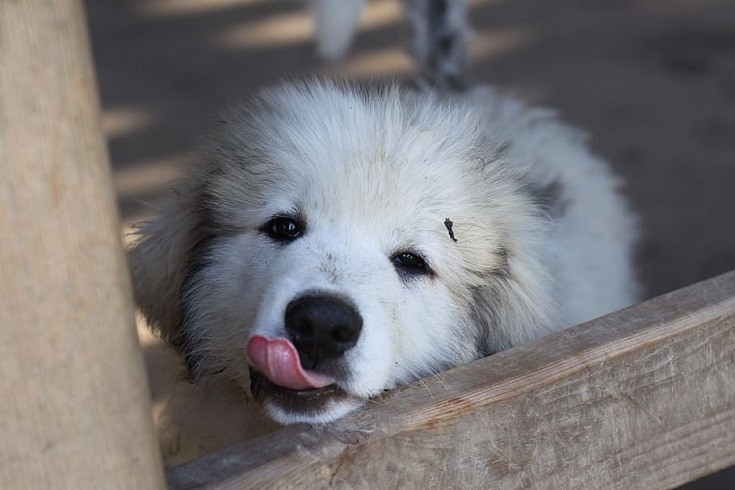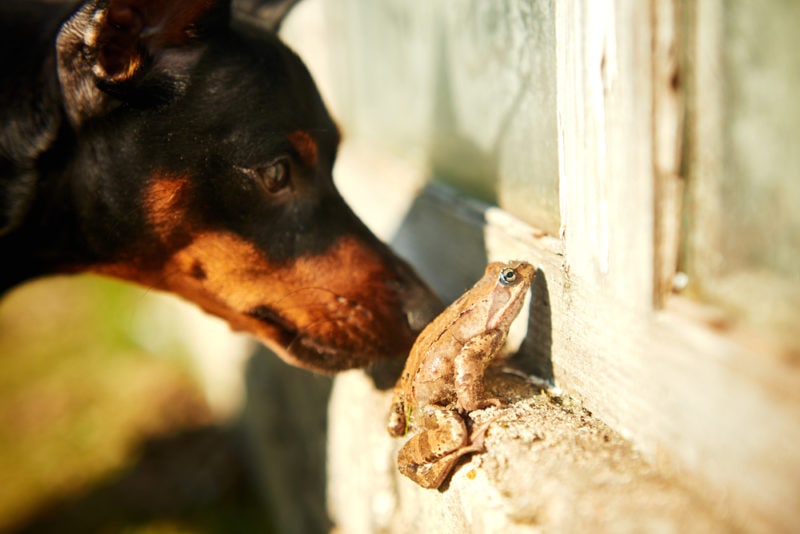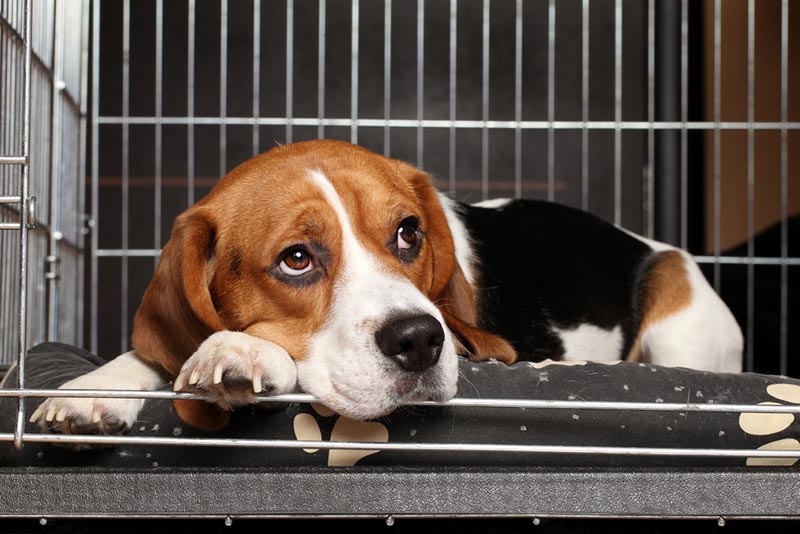Boxmas (Boxer Mastiff Mix): Pictures, Care Guide, Temperament, & Traits
By Hanh Duong
Updated on
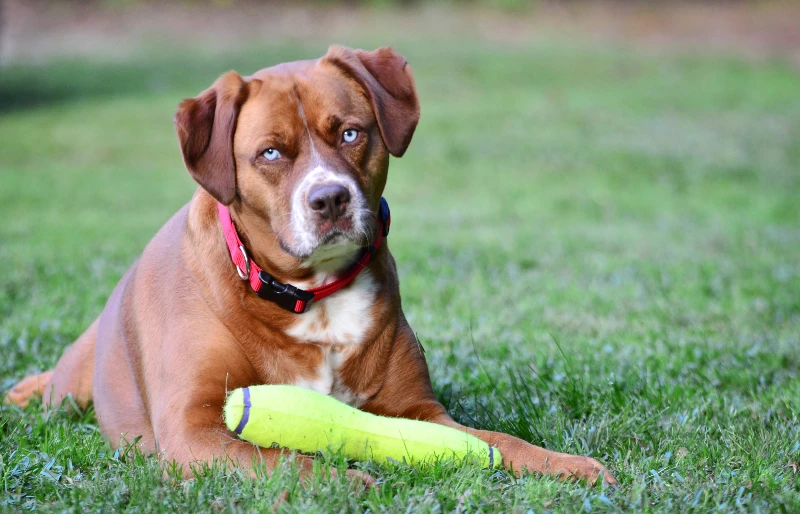
Click to Skip Ahead
Are you looking for a larger dog with slightly less energy than a Boxer? Let us introduce you to Boxmas! The Boxmas, also known as the Boxer Mastiff mix, is a hybrid designer breed. However, despite being a more recent mixed breed, they have gained a lot of traction in the designer dog world.
| Height: | 21–36 inches |
| Weight: | 65–170 pounds |
| Lifespan: | 6–12 years |
| Colors: | Fawn, brindle, and other colors |
| Suitable for: | Not for first-time owners, but for active families seeking a large dog |
| Temperament: | Active, friendly, stubborn, protective |
The animated but devoted Boxmas will attract attention for all the right reasons! If you are unfamiliar with the breed, the appearance of the Boxmas can be intimidating. Those who do will probably also be aware of their capacity for both fun and gentleness.
These pups will need frequent stimulation because they are highly energetic. They will take their responsibility as family protectors seriously and will want to play when they are not on guard—and these pups know how to play! To burn off that energy, engage them in vigorous play like frisbee, tug-of-war, or dog agility. They will also enjoy puzzle toys when left alone.
Boxer Mastiff Breed Characteristics
Boxer Mastiff Puppies
Although the Boxmas is a relatively new designer dog, there are breeders around. To locate trustworthy breeders, though, you’ll need to do some research. Usually, you’ll want to confirm that both parents have had their health examined.
Ask to visit the kennel and verify the living conditions as part of your search for a reputable breeder. Their environment is of great concern, as it can also affect the health of the puppy you want to adopt. The pup you get will be big and active. With the Boxmas, begin socializing and puppy training as soon as possible.
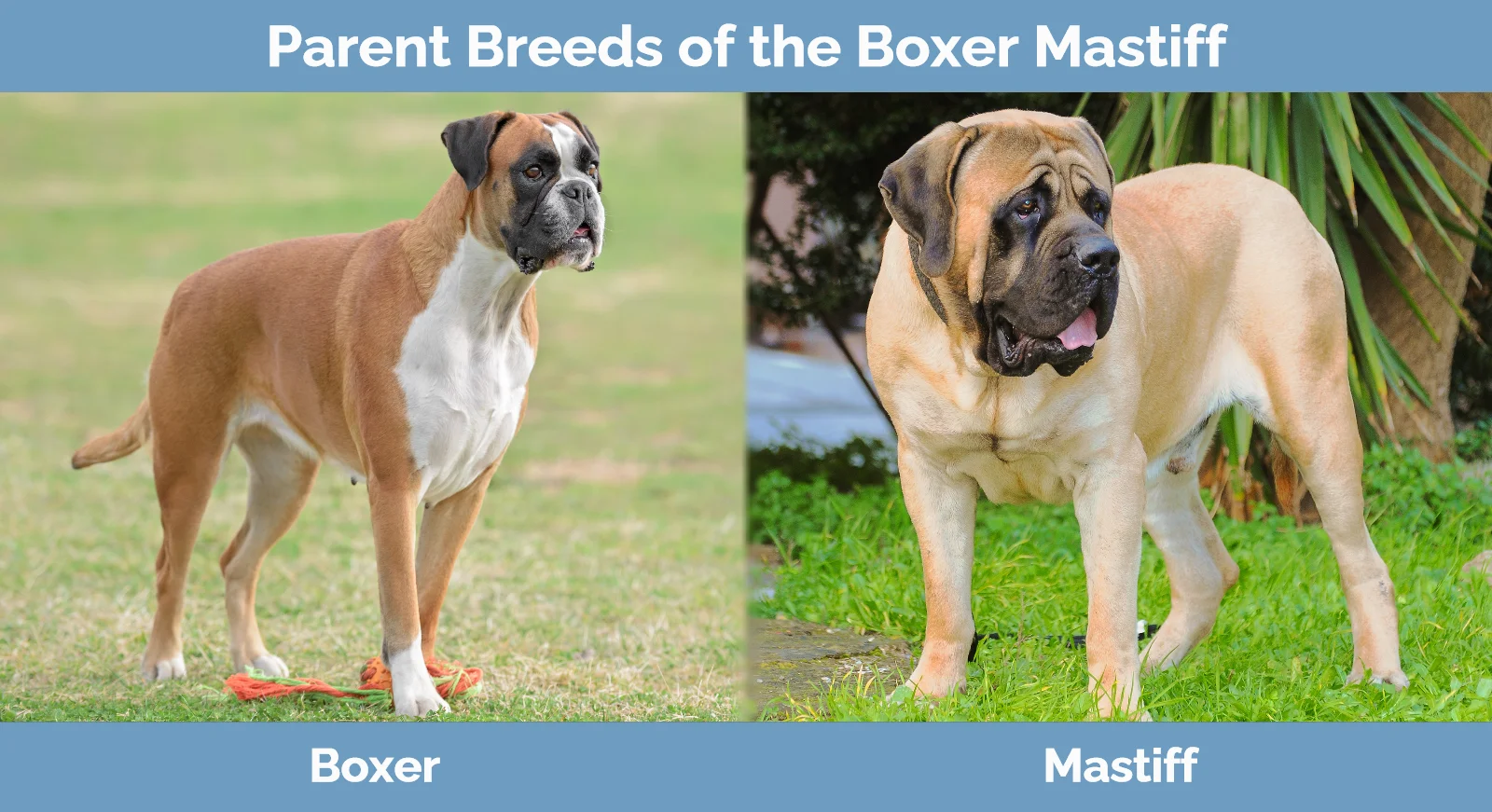
Temperament & Intelligence of the Boxer Mastiff 🧠
The parents of the Boxmas make great family pets that are affectionate and caring dogs. Both parents have an outstanding history, and the parents’ personalities are similar.
The Boxmas is a happy, active animal who occasionally acts silly and loves to play. They are quite the entertainers and will keep you and your entire family entertained for hours on end.
They will be on guard duty when they are not playing, and although the Boxmas is not particularly barky, they will let you know when they feel it is necessary. These canines will become very affectionate and playful with almost everyone.
Are These Dogs Good for Families? 👪
The Boxmas is known for being good with kids because of their protective yet patient demeanor. Therefore, they are well-liked by family households. However, they can be large dogs, and smaller children have the chance of being accidentally knocked over. Always keep an eye on play sessions when young children are around, and never leave them unattended.
Does This Breed Get Along with Other Pets?
Even when raised together from a young age, the Boxmas is not known for being very friendly toward other pets, so if you have a cat in your home, there may be problems. It’s crucial to socialize your Boxmas properly and watch how they interact as they get older so you can avoid any future altercations between them. With a lot of time and patience, these dogs can learn to live happily with other animals.
Things to Know When Owning a Boxer Mastiff:
Food & Diet Requirements 🦴
Paying attention to what you feed your dog is crucial. Plan a particular diet in accordance with the requirements of the breed—they are large and energetic and need a diet that matches these criteria.
Ensure you coordinate with family members to give your pup a properly calculated amount of food. It’s a good idea to offer them treats, but not too much. Instead, choose low-calorie treats to help prevent obesity. Due to their large size and high energy, these dogs will do well on a high-protein diet with as few “filler” ingredients as possible.
Exercise 🐕
The Boxmas is energetic and animated, so they need a lot of exercise. If you can’t give them this, the Boxmas may not be for you. They will need to exercise for at least 60 minutes each day to avoid becoming bored and destructive.
They will also want vigorous engagement with humans in addition to basic exercise. They might accomplish this by engaging in sports such as dog agility classes or playing frisbee to get all that energy out.
Training 🎾
Both of the Boxmas’ parents exhibit attentiveness and protection. This indicates that socialization of the Boxmas should begin at an early age. The crucial thing is to ensure that your puppy has positive new experiences and to praise them appropriately.
Consistent training is necessary to guarantee that your dog behaves well. After learning the desired habits, you should keep training sessions going. They are generally easy to train as they are intelligent canines and often seek praise from their owners. However, they can become bored and distracted easily, so keep the training sessions brief and entertaining.
Grooming ✂️
A single- or double-coated Boxmas is possible. Boxers have a single coat, but Mastiffs have a double. So, you can end up with a Boxmas that resembles either parent, depending on whose parent your pet most takes after. However, they often have a single coat because they tend to have their Boxer parent type more. Because single coats don’t shed as much throughout the summer or winter, they generally need less maintenance, and a gentle brushing a few times a week is ideal.
Also, make sure to brush their teeth regularly, and only use shampoo that is specially formulated for dogs, as human shampoo can quickly dry out their skin.
Health and Conditions ❤️
The Boxmas is generally a healthy breed, but like any hybrid dog, they may inherit issues from their parent breeds.
- Thyroid deficiencies
- Eye problems
- Hip dysplasia
- Kidney disease
- Heart disease
- Wobbler syndrome
- Elbow dysplasia
- Degenerative myelopathy
- Cystinuria
- Brachycephalic airway syndrome
Male vs Female
Boxmas are robust, stocky canines that weigh anywhere from 70 to 100 pounds. The difference between males and females are small, but generally speaking, the females are typically a bit smaller and lighter than males. Females tend to be more aloof in general, while males mature later than females and so may be a bit more challenging to train.
3 Little-Known Facts About the Boxer Mastiff
1. These Dogs and Small Apartments are Not a Good Match
The Boxmas will thrive in a residence with a yard. However, if you can accommodate your dog’s need for exercise and have plenty of space indoors, a medium-sized apartment will do.
2. The Boxmas Drools!
Drool, according to the majority of Boxmas owners, is a trait shared by both the parent breed and the hybrid. So, prepare your tissues and wipes!
3. They Make Excellent Guard Dogs
Boxer Mastiffs naturally gravitate toward guarding and defending the people and things they love. Although training them is made easier by this characteristic, don’t let up too much. They need a firm but gentle hand during training.
Final Thoughts
When you first meet a Boxer Mastiff mix, it can seem pretty intimidating, but as you get to know them better, you’ll discover just how lovely of a personality they can have. Make sure you’re prepared to have a large dog if you’re looking for this mix. Just keep in mind to properly socialize your Boxmas when you bring one home to prevent any behavioral problems.
As they have a working and guarding history, be sure to train them early because you will want to fix the overly protective traits from a very young age.
Featured Image Credit: Virginia Blount, Shutterstock



